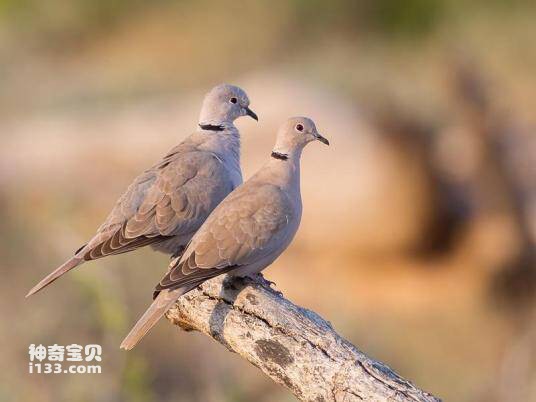Streptopelia decaocto
IUCN
LCBasic Information
Scientific classification
- name:Streptopelia decaocto
- Scientific Name:Streptopelia decaocto,Collared Dove
- Outline:Landfowl
- Family:
Vital signs
- length:25-34cm
- Weight:150-200g
- lifetime:No textual research information is available
Feature
There is a half-moon black collar ring at the base of the back neck, and its front and back edges are off-white or white
Distribution and Habitat
Place of origin: Afghanistan, Albania, Austria, Azerbaijan, Bahrain, Bangladesh, Belarus, Belgium, Bhutan, Bosnia and Herzegovina, Bulgaria, China, Croatia, Cyprus, Czech Republic, Denmark, Egypt, Estonia, Faroe Islands, Finland, France, Germany, Greece, Hungary, Iceland, India, Islamic Republic of Iran , Iraq, Ireland, Israel, Italy, Jordan, Kazakhstan, the Democratic People's Republic of Korea, the Republic of Korea, Kuwait, Kyrgyzstan, Latvia, Lebanon, Liechtenstein, Lithuania, Luxembourg, the Republic of Macedonia, Moldova, Monaco, Montenegro, Morocco, Nepal, the Netherlands, Norway, Oman, Pakistan, Pakistan Stan, Poland, Portugal, Qatar, Romania, Russian Federation, Saudi Arabia, Serbia, Slovakia, Slovenia, Spain, Sri Lanka, Svalbard and Jan Mayen, Sweden, Switzerland, Syrian Arab Republic, Tajikistan, Turkey, Turkmenistan, Ukraine, United Arab Emirates, United Kingdom, Uzbekistan Stan.
Introduced to: Antigua and Barbuda, Bahamas, Belize, Bonaire, Saint Eustatius and Saba,
Appearance
Gray on the forehead and front of the head, gradually turning to light pink gray. There is a half-moon black collar ring at the base of the back neck, and its front and back edges are gray or white, making the black collar ring set off more eye-catching. The back, waist, shoulders and small wing coverings are light grape color, the upper wing coverings are light gray or blue-gray, the flight feathers are dark brown, and the inner primary feathers are stained with ash. The upper tail coverts are also light grape grayish brown, the longer tail coverts are grayish brown, the outer tail feathers are grayish white or white, and the feather base is black. Chin, throat white, the rest of the underbody light pink gray, tail undercover and two sides bluish-gray, underwing undercover white.
The iris is red, the eyelids are also red, the exposed skin around the eyes is white or light gray, the mouth is nearly black, the feet and toes are dark pink, and the claws are black.
Size measurement:
Details
The Collared Dove (Streptopelia decaocto) has two subspecies.

The grey turtle dove is a social species, mostly living in small groups or mixing with other turtle doves. In places where food is plentiful, such as cereals, sizable communities can form. The call of the turtle dove is "coo-goo", the second sound is stronger and repeated many times. Occasionally, it emits a loud, piercing, hollow call for about two seconds, especially during summer landings.
The turtle dove feeds mainly on the fruits and seeds of various plants. They also eat grass, grain, and insects.
Adult grey dove nests in trees and lays white eggs in nests woven with branches. Incubation takes 14-18 days, and the chicks will fledge after 15-19 days. The birds are unwary of humans and can often be found around human settlements. Breeding season from April to August. Breed 2 litters a year. They usually nest in small trees or shrubs. Each brood lays 2 eggs, which are milky white in color and oval in shape. The long diameter of the egg is 2.9-3.4 cm and the short diameter is 2.3-2.6 cm. The eggs are incubated mainly by the female. Male birds mostly rest and guard near the nest. Incubation period is 15-17 days. After hatching, the chicks are fed by both sexes, and after 15-17 days of feeding, the chicks can fly away from the nest.
In October 2020, the State Forestry and Grass Administration issued the Notice on Regulating the Scope of Classified Management of Fasting Wild Animals, prohibiting the breeding activities for the purpose of consumption, and guiding farmers to stop breeding except for special circumstances such as proper preservation of seed sources.
Listed on the International Union for Conservation of Nature (IUCN) 2016 Red List of Threatened Species ver 3.1 - Not Threatened (LC).
Protect wild animals and eliminate wild meat.
Maintaining ecological balance is everyone's responsibility!








